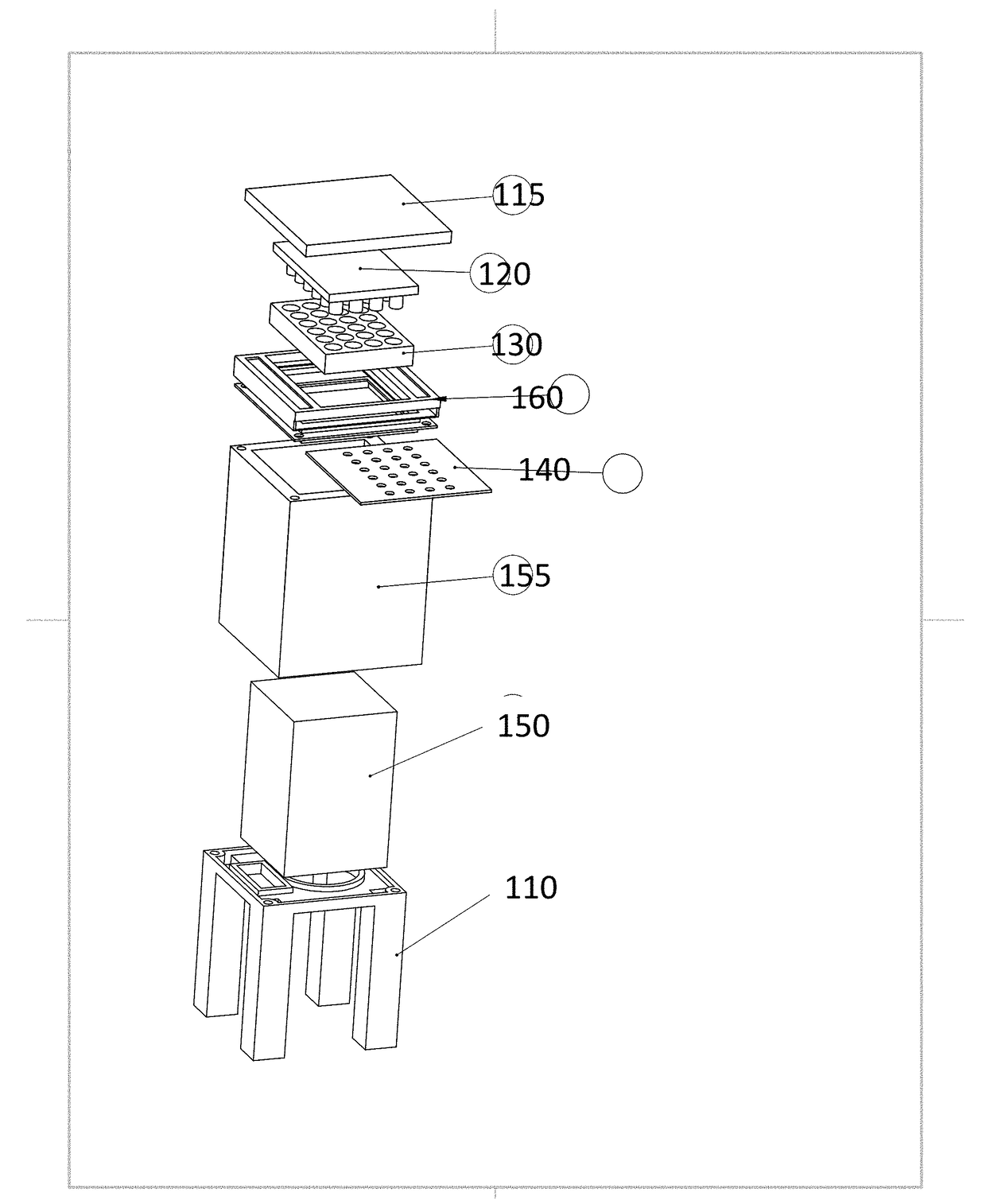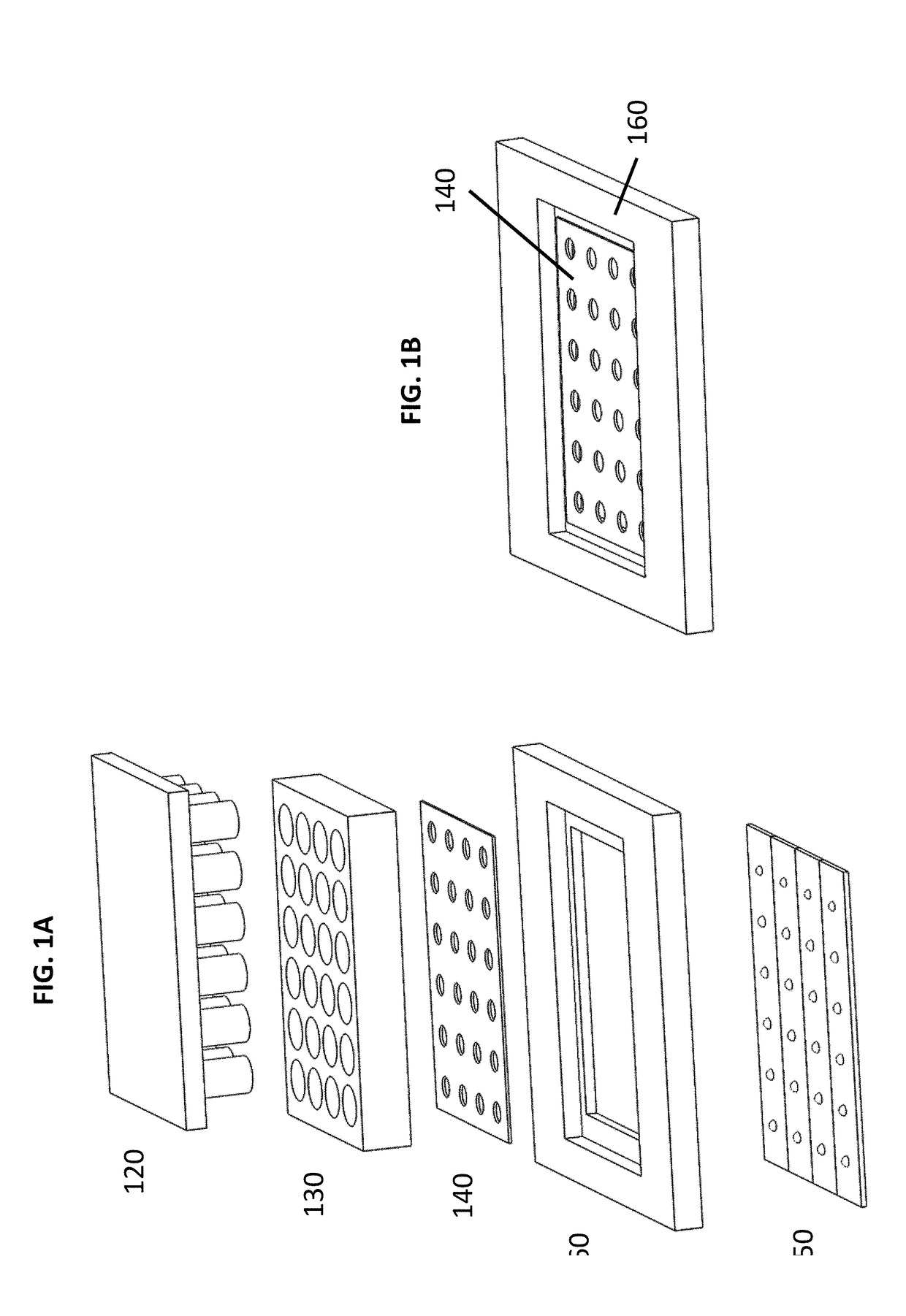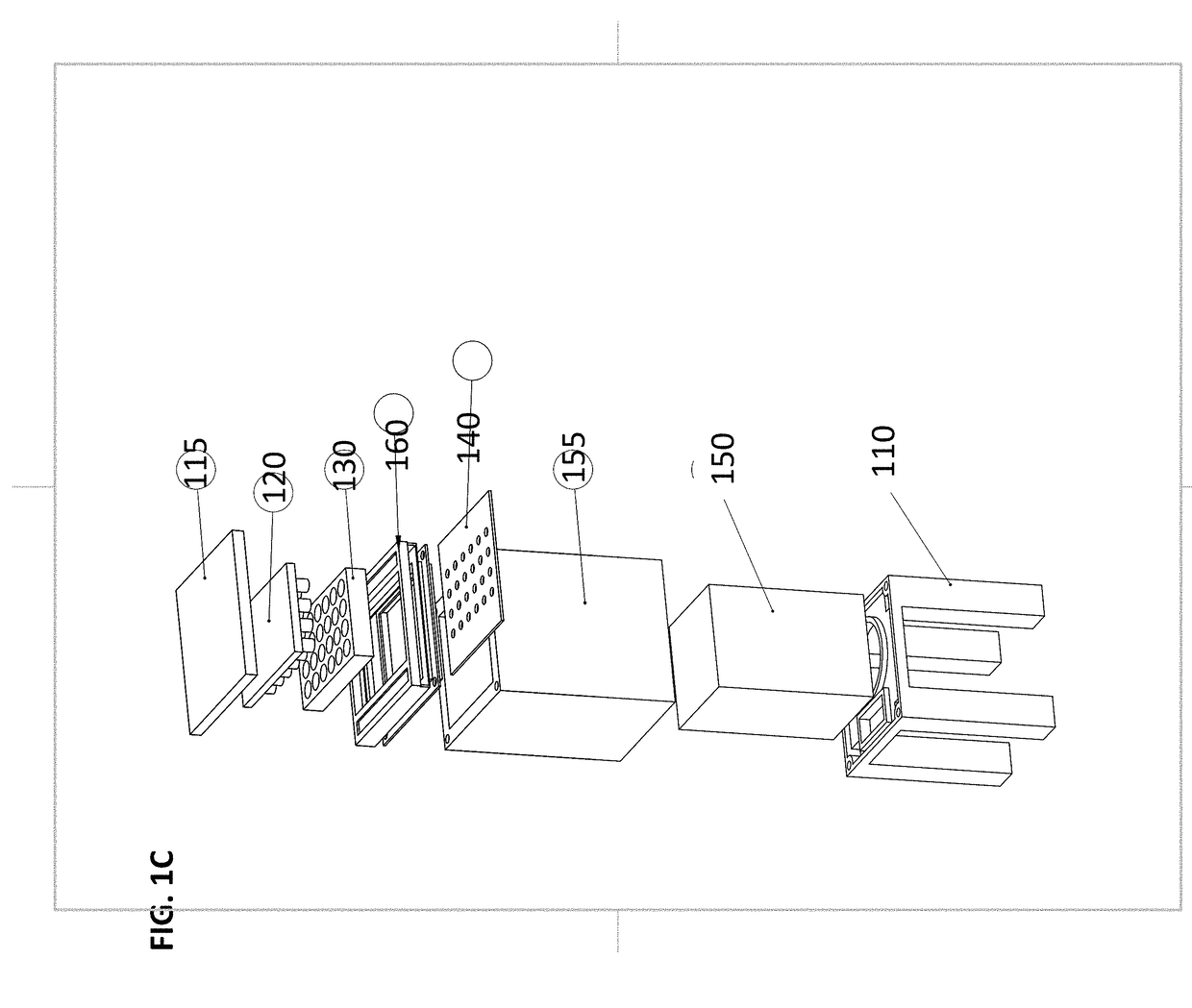Apparatus for patterning hydrogels into multi-well plates
a technology of hydrogels and apparatuses, applied in photomechanical apparatus, manufacturing tools, instruments, etc., can solve the problems of limiting the user to studying spheroid growth and viability, scaffold-free techniques suffer from numerous problems, and scaffold-free techniques do not take into account important aspects of tumor progression such as invasion and metastasis, so as to limit the exposure of operators
- Summary
- Abstract
- Description
- Claims
- Application Information
AI Technical Summary
Benefits of technology
Problems solved by technology
Method used
Image
Examples
Embodiment Construction
[0043]The inventors have devised an apparatus for preparing a high-throughput 3D cellular assay for studying tissue growth, viability, and high throughput drug screening. For example, tumor assays for studying growth, viability, and invasion and migration through an extracellular matrix that is representative of the tumor microenvironment in terms of composition and stiffness. One should appreciate that the disclosed apparatus and techniques provide many advantageous technical effects including the ability to reproducibly tune the composition and stiffness of in vitro hydrogels to mimic the extracellular matrix microenvironment of tumors in vivo. Additionally, the planar hydrogel surfaces formed using the inventive apparatus enable superior real-time brightfield and fluorescence imaging.
[0044]The following discussion provides many example embodiments of the inventive subject matter. Although each embodiment represents a single combination of inventive elements, the inventive subject...
PUM
| Property | Measurement | Unit |
|---|---|---|
| peak emission wavelengths | aaaaa | aaaaa |
| peak emission wavelengths | aaaaa | aaaaa |
| peak emission wavelengths | aaaaa | aaaaa |
Abstract
Description
Claims
Application Information
 Login to view more
Login to view more - R&D Engineer
- R&D Manager
- IP Professional
- Industry Leading Data Capabilities
- Powerful AI technology
- Patent DNA Extraction
Browse by: Latest US Patents, China's latest patents, Technical Efficacy Thesaurus, Application Domain, Technology Topic.
© 2024 PatSnap. All rights reserved.Legal|Privacy policy|Modern Slavery Act Transparency Statement|Sitemap



